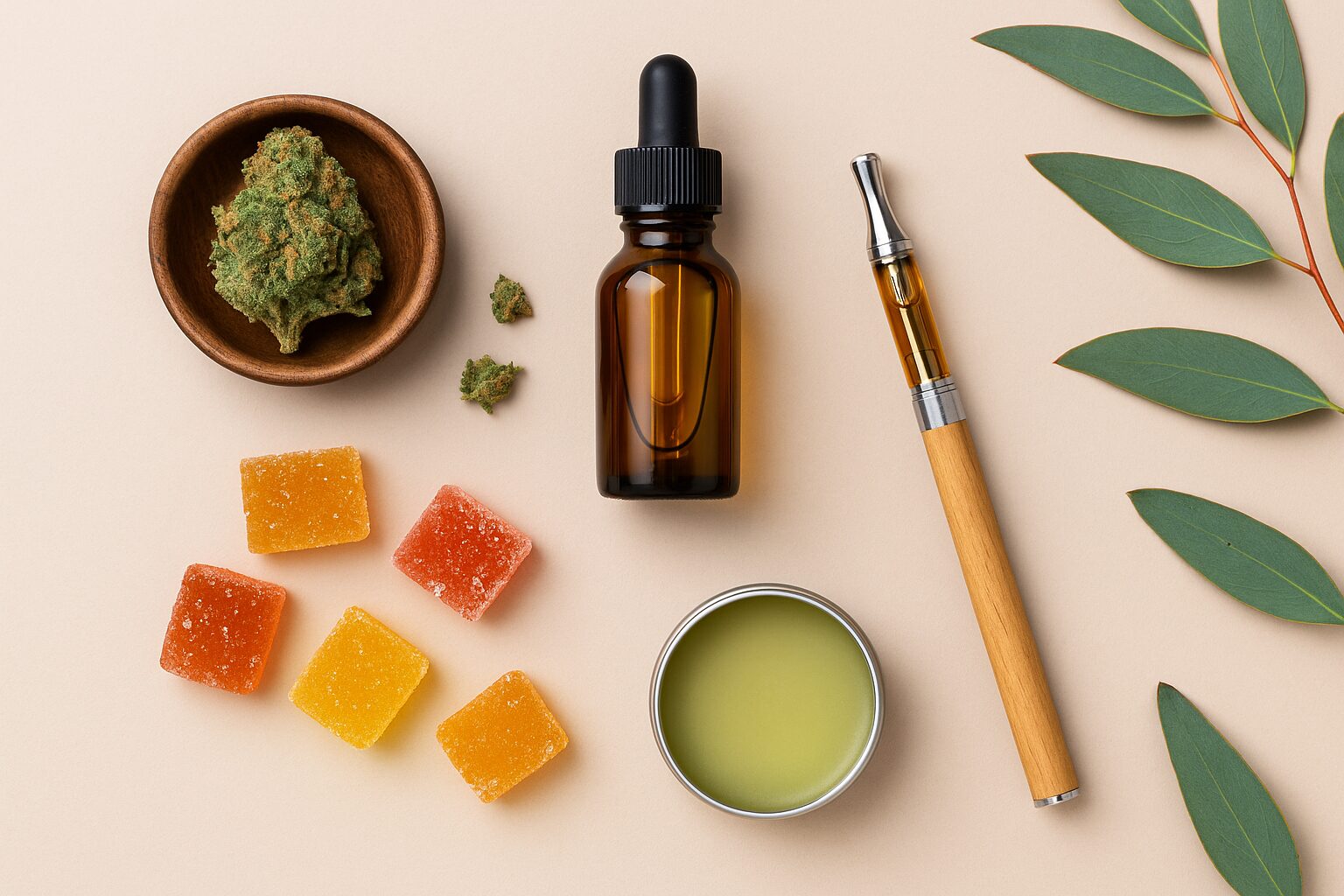Cannabis comes in many forms, and each one offers a different experience. Whether you prefer smoking, vaping, or consuming edibles, understanding the main types of cannabis products can help you choose what fits your lifestyle and needs.
In this article, we’ll break down the most common forms of cannabis—from traditional flower to modern concentrates and tinctures—and explain their effects, uses, and advantages.
🌿 1. Cannabis Flower (Bud)
The flower, also known as “bud,” is the most natural and traditional form of cannabis. It is the dried and cured blossom of the female cannabis plant.
- How it’s used: typically smoked or vaporized.
- Effects: depends on the strain’s THC/CBD ratio and terpene profile.
- Advantages: quick onset, easy to control dose, wide variety of strains.
Many beginners start with flower because it allows a direct connection with the plant itself.
👉 Read more about how cannabinoids and terpenes shape these effects in our guide on Cannabinoids Explained.
🧈 2. Hash and Concentrates
Hashish (hash) and concentrates are made by separating and compressing the plant’s trichomes—the resin glands that contain THC, CBD, and aromatic terpenes.
Common types:
- Hash → traditional pressed resin.
- Kief → loose trichome powder collected from flower.
- Wax, Shatter, and Rosin → modern extracts with high potency.
Effects: Stronger and longer-lasting than flower due to higher THC concentration.
Best for: Experienced consumers seeking intensity and flavor.
External source: Leafly – Cannabis Concentrates Guide.
🍪 3. Edibles
Edibles are foods infused with cannabis extract or oil—like gummies, brownies, or drinks.
- How they work: The THC is processed by the liver, turning into 11-hydroxy-THC, which has stronger and longer effects.
- Onset: 30–90 minutes after eating.
- Duration: 4–8 hours.
Tip: Always start low (2.5–5 mg THC) and wait before taking more.
💧 4. Tinctures and Oils
Tinctures are cannabis extracts dissolved in alcohol or oil, often taken sublingually (under the tongue).
- Onset: 10–30 minutes.
- Benefits: discreet, precise dosing, no smoke or smell.
- Popular with: medical users and those looking for controlled effects.
🧴 5. Topicals
Topicals include creams, balms, and lotions infused with cannabis. They are applied directly to the skin.
- Effects: localized relief, no psychoactive “high.”
- Best for: inflammation, pain, or skin irritation.
Many topicals combine cannabinoids like CBD with essential oils for added benefits.
📊 Comparison Table
| Form | Onset Time | Duration | Psychoactive | Common Use |
|---|---|---|---|---|
| Flower | Minutes | 1–3 hrs | Yes | Smoking/Vaping |
| Hash/Extracts | Minutes | 2–4 hrs | Yes (strong) | Dabbing/Vaping |
| Edibles | 30–90 mins | 4–8 hrs | Yes (stronger) | Food/Beverages |
| Tinctures | 10–30 mins | 2–4 hrs | Mild–Yes | Oral/Sublingual |
| Topicals | None | Varies | No | Local Relief |
📌 Key Takeaways
- Cannabis can be consumed in many forms, each with its own effects and duration.
- Flower is most traditional, while edibles and tinctures are discreet alternatives.
- Concentrates offer intensity, and topicals provide targeted, non-psychoactive relief.


Leave a Reply